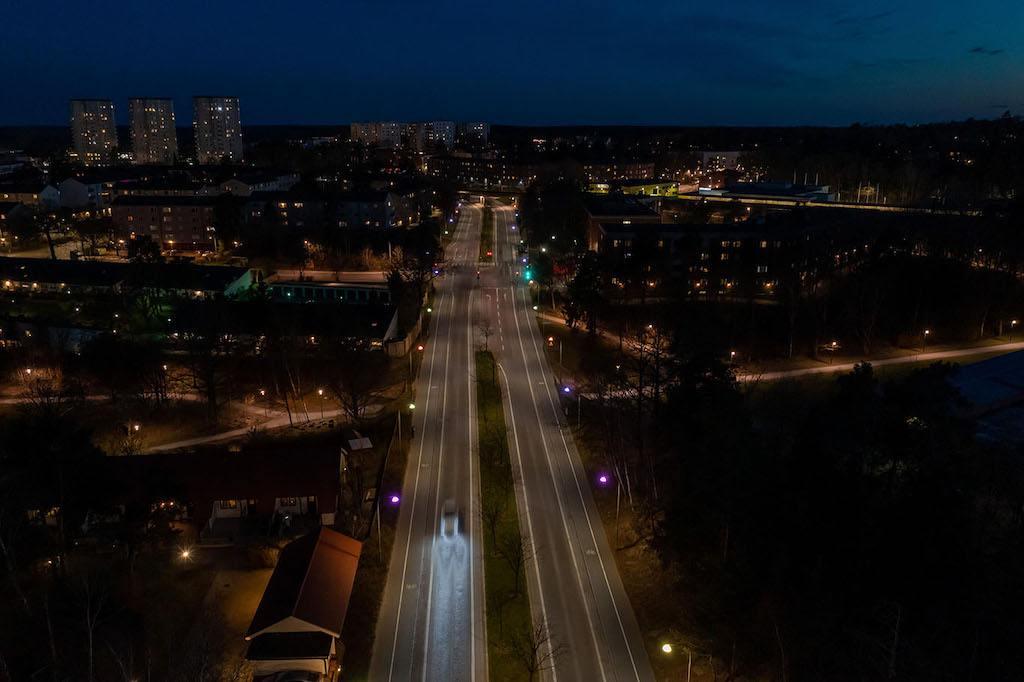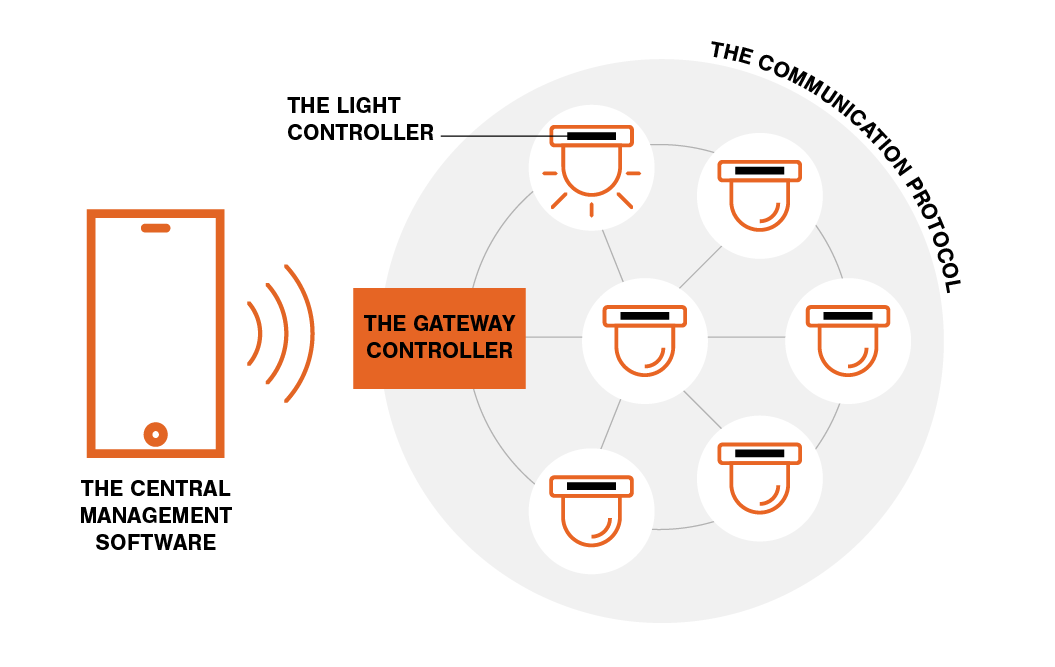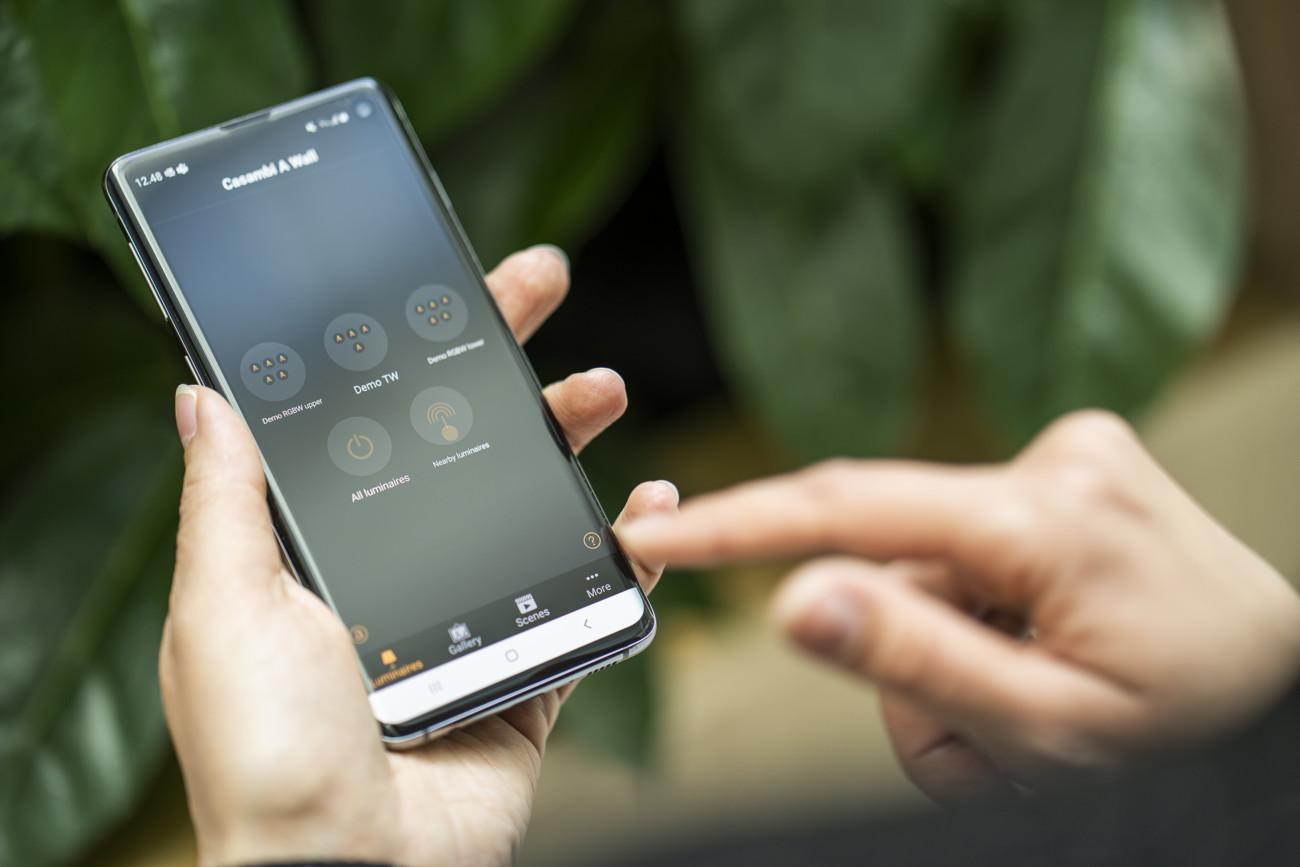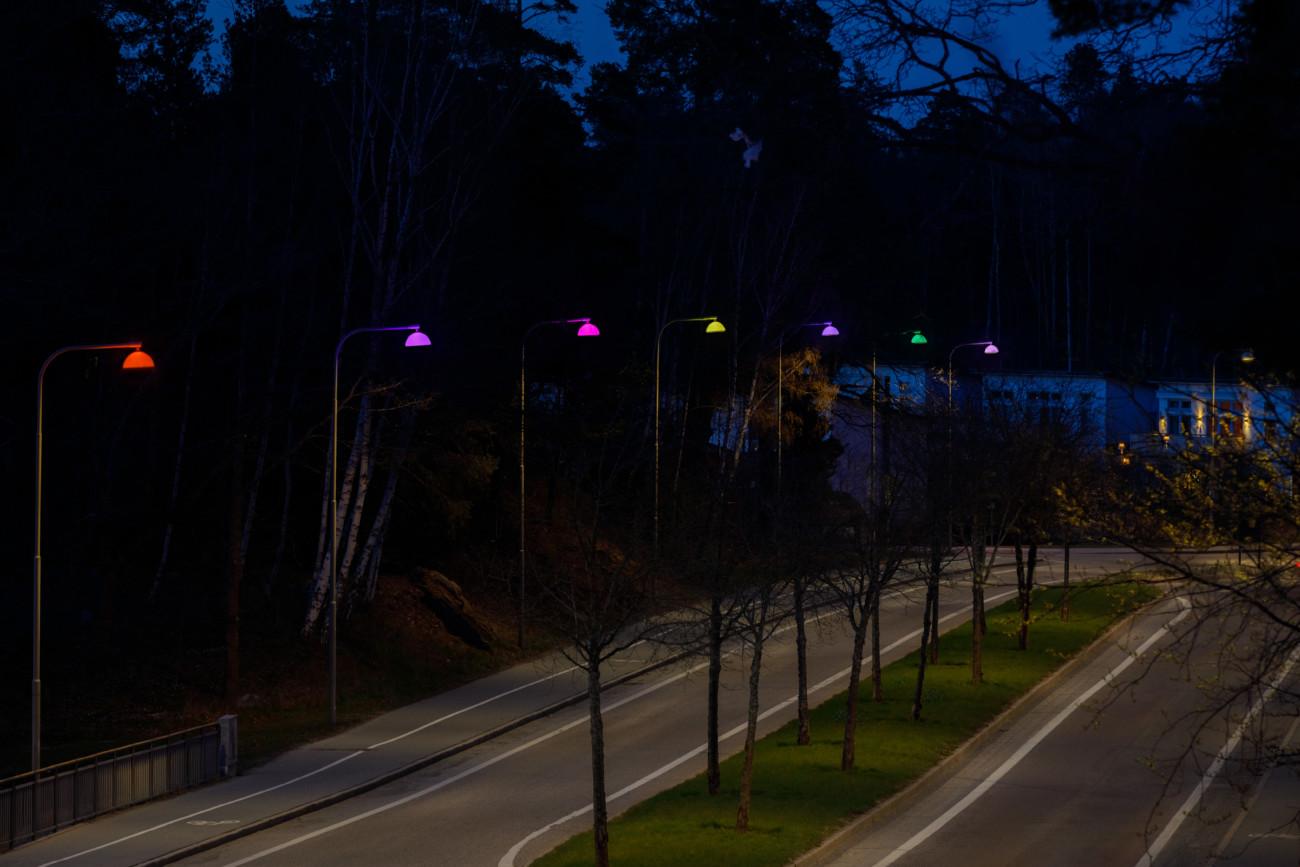
Introduction
Today, more than half of the world’s population is living in cities, and it is estimated that this figure will reach 75% by 20501. According to the United Nations, urban areas consume over two-thirds of the world’s energy and account for more than 70% of global CO2 emissions. Street lighting is a key contributor to energy consumption in cities where it can make up to 53% of a municipality’s total electricity bill2 and ranks near top on the list of reasons for expensive maintenance callouts. Through the deployment of LED luminaires and smart controls significant energy savings can be achieved.
In addition to the potential for energy savings, urban lighting carries great social and ecological impact. It improves safety and makes our cities more vibrant and attractive for communities and businesses. A sustainable and ecologically responsible approach to street lighting must meet rigorous targets:
- Minimize energy consumption: Energy savings between 50-80% can be achieved by implementing LED street lights with smart controls that provide adaptive schemes such as dimming based on schedules and occupancy status3.
- Minimize operating costs: The total cost of a typical street lighting installation over 25 years is split as follows: 85% maintenance/operation and 15% capital cost. The main focus is on the ease of maintenance and flexibility in configuring and using street lighting. Deployment of robust and technologically advanced control systems that give the possibility for remote access and remote diagnostics is important.
- Provide safety and security: Street lighting makes an important contribution to safety and quality of life. Schedule-based dimming of street lights complemented with movement detection can reduce security concerns while making sure sufficient lighting is provided only when it is needed.
- Minimize light pollution: Certain species, such as bats, birds and insects, are negatively affectedby light pollution, especially from the cool white spectrum of street lighting. The implementation of tuneable white lighting in ecologically sensitive areas can reduce the decline in biodiversity caused by light pollution4.
- Provide scalability: Due to the long lifespan of LED technology, any equipment that is installed today will have a long-term effect, up to 25 years. It is therefore important that street lighting equipment is designed to be upgradable in the future – catering to new unforeseen requirements, evolving street lighting regulations or emerging smart city applications; such as new dimming schemes or the addition of new sensor capabilities to a pre-existing system.
References
1 Lighting in the Urban Age, ARUP, 2020, Available from: https://www.arup.com/perspectives/publications/research/section/lighting-in-the-urban-age
2 Kee, Keh Kim & Lau et al, 2020, An Energy-efficient Smart Street Lighting System with Adaptive Control based on Environment. 2. 48-57. 10.35370/bjost.2020.2.1-09.
3 Avalon C.S. Owens et al, Light pollution is a driver of insect declines, Biological Conservation, 2020, https://www.sciencedirect.com/science/article/pii/S0006320719307797
4 Brian Espey, Dark Sky Ireland, Best Practices in Public Lighting, 2020https://www.darksky.ie//data/wordpress/htdocs/wp-content/uploads/2020/04/BestPracticesInPublicLighting_BEspey2020.pdf
How wireless smart lighting control can help solve today’s challenges
Wireless smart lighting control caters well to today’s outdoor facilities by directly answering the need for powerful, highly customizable lighting control while tapping into further energy savings with sensors, switches, and other smart devices.
Application highlights:
The building blocks of smart lighting control
Wireless smart lighting systems principally comprise four elements:
The light controller
This is the communication transceiver that controls the driver or the light-sensitive module within a luminaire itself.
The central management software
This gathers data and controls all the luminaires in the lighting network.
Isolated lights can be remotely controlled or can be grouped together and controlled synchronously.
The communication protocol
This is the system of rules that allows lights within a network to exchange messages without the need for wired communications.
The gateway controller
This aggregates communication from the light controllers and backhauls data to a central management platform. Building management personnel can remotely monitor their lighting networks and analyze performance dashboards in real-time.

How Casambi can help
With Casambi your street lighting becomes part of smart city infrastructure
Casambi offers the perfect solution to meet modern cities’ stringent lighting control demands while tapping into further energy savings with sensors and other solutions from the Casambi Ecosystem. Casambi wireless lighting controls are based on BLE (Bluetooth Low Energy), which is the only low-power wireless technology found in all modern smartphones, tablets, and even smartwatches. The same technology is embedded into hundreds of luminaires and devices from all the major lighting manufacturers, enabling you to enjoy the benefits of smart lighting without the need for special wiring, or complex hardware such as routers or controllers.
Casambi’s open ecosystem architecture is a generation ahead of the proprietary legacy systems currently on the market. All of the company’s native products and all of its partners’ Casambi Ready products are 100% compatible with each other. The technology is also integrated into fixtures, drivers, switches, sensors, and a diverse collection of modules.
Casambi collaborates with a vast number of leading luminaire, driver, LED board, LED lamp, and lighting control module manufacturers. Currently, there are 1000+ (and counting!) Casambi-enabled products available – all utilizing the simplicity of safe and reliable wireless communication. Thanks to its simplified system architecture and user interfaces, Casambi is easy and fast to specify, install, commission, and use.
Your smart lighting infrastructure should be scalable and upgradable to meet any new technology or urban application-related requirements in the future.
Extended wireless communication range
Casambi supports Bluetooth 5, which is the latest version of the Bluetooth Low Energy standard. Bluetooth 5, compared to its predecessor Bluetooth 4, quadruples the wireless range from 50 up to 200 meters in free air, making it ideal for street lighting applications.
Future-proof and fully scalable
Street lights today have an expected lifetime of up to 25 years. New possibilities in smart city applications, updated street lighting regulations or new requirements are very likely to arise in this period.
A Casambi network consists of 250 units and an endless number of networks can be created and used in a single site, giving you endless possibilities to scale up in the future. You can start from a small standalone network and have the possibility to connect more networks together to become part of a smart connected city platform in the future.
Cities of the future will inevitably require sensors to measure air quality, noise levels, traffic flow, and other environmental factors.. Casambi’s open and 100% interoperable ecosystem gives you the ability to upgrade your installation by adding devices from multiple vendors when the need arises.

No additional hardware or software is needed to configure, use, and update the settings of a Casambi network. The Casambi App, which is free to download for iOS and Android, is a full-featured end-user and commissioning tool. Casambi remotely and safely updates devices in the field with the latest software and firmware. Over-the-Air programming allows Casambi to push new software features and additional functionality out to the entire fleet of installed devices at once. Updating your Casambi network with new system features as soon as they become available makes your installation future-proof and upgradable to meet any new technology or urban application related requirement in the future.
Remote control and monitoring
With Casambi you can remotely control and monitor your lighting installation via the cloud by use of an internet-connected device with the Casambi App set up as a gateway.
With remote access it is possible to change and update all network and control settings such as dimming levels, light scenes or schedules without the need to visit the site in person.
Casambi offers a Cloud API, which allows software developers to integrate Casambi networks into third-party city dashboards and applications and in doing so, opening the doors to remote monitoring, including access to sensor, diagnostics and usage data from a lighting installation. You can monitor and visualize all data from a Casambi network, such as energy consumption, failure states, occupancy patterns or air quality. Using real-time insights, you can continuously improve the sustainability and efficiency of your street lighting network, where it becomes part of the smart city infrastructure.
Alternatively, you can choose to store data that is generated by the Casambi network offline, to access and analyse later.

Secure and robust
Casambi has been used in many highly sensitive environments such as in airport control towers and hospitals, where reliability and security of communication are critical.. Full encryption of communication between mobile devices and end nodes and security measures for authorization means all data that is transmitted in a Casambi network is 100% protected and safe.
All Casambi Ready products are built in a standardized hardware and software environment. Each Casambi node carries a backup of the entire system, which speeds up the communication and makes the communication more robust. Unlike other wireless communication technologies, there are no central communication units that could become a weak link for uninterrupted communication, such as routers or area controllers. If one node fails, the communication continues via other nodes.
Sharing the same hardware and software environment, all Casambi nodes run on the latest version of the available firmware and receive over-the-air updates. New functions or bug fixes become regularly available free of charge, making your system robust and secure today, and in the future.
Full functionality for dynamic light settings
Casambi offers all control options that are expected from a full-featured smart city lighting installation. You can create scheduled light settings and incorporate manual or sensor inputs to override in case of special events or incidents. Diverse operating modes are possible such as on/off, dimming 0-100%, circadian control, tuneable white or RGBW.
- Scheduling and timers: Create schedules to turn the lights on/off or dim down to selected levels according to the weekday, date or the time of day i.e., dusk or dawn. It is also possible to create special light settings for national days.
- Manual control: In case of special events or emergencies you can override schedules manually, either through the Casambi App or through smart city management systems via the cloud.
- Sensors: To further improve the energy efficiency of your installation it is possible to incorporate sensor input to adjust the light output accordingly.
- Daylight responsive lighting: Light output is adjusted according to the amount of available daylight.
- Occupancy: In addition to scheduled dimming, lights can be switched off or further dimmed down if the streets are empty late at night. When motion is detected, the light level is increased to the scheduled level.
- Tunable white lighting: Cool white color temperature (K) that is preferred for better face recognition and security is warmed up after midnight to reduce the negative effects on biodiversity.

Fit for retrofit or new
The Casambi Ecosystem consists of 1000+ interoperable lighting products, including luminaires, drivers, sensors, switches, dimmers and other control gear from all major lighting manufacturers. Depending on the application, you can choose a Casambi Ready luminaire from the ecosystem, or give Casambi wireless connectivity to an existing luminaire through the use of Casambi white modules, Casambi-enabled drivers or Casambi-enabled outdoor nodes.
Zhaga-D4i certified nodes
In response to demand in the market for smart LED luminaires with IoT connectivity, the Zhaga consortium joined forces with the DiiA to produce the Zhaga-D4i certification. Zhaga-D4i defines how D4i sensors and communication nodes can be integrated into a Zhaga node/socket and be made compatible with any certified Zhaga D4i luminaire This makes it easier to add or upgrade sensors and/or communication nodes to outdoor luminaires.
The combination of Zhaga-D4i certified sensors and Zhaga-D4i certified luminaires is a guarantee for multi-vendor interoperability.
The Casambi Ecosystem today contains wireless communication nodes that are Zhaga-D4i certified. All electrical connection and mechanical fixing are done by twist and lock, without tools. The nodes come in an IP66, UV resistant, IK09 enclosure.
With this, you can give Casambi wireless connectivity to any Zhaga-D4i certified street light, without the need for additional complex hardware integration.
NEMA nodes
Wireless communication nodes that are compatible with NEMA sockets (ANSI 136-41) are available from the Casambi Ecosystem. These nodes enable wireless control of DALI, 0-10V and 1-10V devices (drivers, electronic ballasts, etc.). All hardware and software complexity is reduced to a minimum, as there is no need to use hubs, master devices or complex software tools for wireless controls in outdoor installations.
All electrical connection and mechanical fixing of the nodes to existing luminaires with NEMA sockets are done by a simple twist and lock, without tools. The nodes come in an IP66, UV resistant, IK09 enclosure.
Specifying with Casambi – How to get started
Specify a project with Casambi in five simple steps:
- Every project starts with luminaire selection. With Casambi, off-the-shelf Casambi-Ready luminaires can be chosen. Or, a pre-existing luminaire, without Casambi connectivity, can be converted by using a CBU (Casambi Bluetooth Unit).
- When deciphering the end-user and how/if they will interact with the light stack a specifier just picked, it is easy to programme the Casambi App to be compatible with their bespoke needs. It is possible to have manual controls and/or automated controls which use sensors, or timers.
- When selecting sensors and switches, for manual control, it is possible to take a switch from the Casambi Ecosystem or simply use the Casambi App as the end-user control. Highly intuitive and easy-to-use, the app contains all the functionality that one might need or can imagine. If a specifier is working on an historical site and wants to keep the original wired control infrastructure, again, it is easy to give them wireless connectivity by deploying a CBU module.
- When defining the functionality and the complexity of the project, a specifier may find they need to interface their planned network with other systems. For example, it might be necessary to interface with a pre-existing DALI installation already in use on a site. Casambi can communicate with a DALI network through a CBU-ASD. This is a wireless control unit for LED drivers with 0-10V, 1-10V, or DALI dimming interface. The control output can be configured either as analog 0-10V (and 1-10V) or as a digital standalone DALI control interface. When it comes to data collection and recall, it is possible to connect a Casambi network with a third-party management system. The data generated can either be kept within the onsite lighting network, or it can be sent to the cloud where it is transferred to, for example, visualization software for energy consumption monitoring or predictive maintenance services.
- When specifying the solution, full lighting control system tender texts complete with system requirements,control functionality, device specifications with datasheets, and app notes are available to download from Casambi’s webpage
Case Study – Farsta Street Lighting, Stockholm

In line with its goal to become the world’s smartest city by the year 2040, the City of Stockholm initiated its smart and connected street lighting project with the goal of upgrading the existing street lighting with efficient LED luminaires, equipped with smart controls. Casambi controls were selected for the Farsta location, containing 250 street lights from Fagerhult. Street lights with RGBW features were selected in order to create specific atmospheres within the public space throughout the year. The whole system is connected to the City of Stockholm’s smart city control system for remote control and monitoring of the network.
Commissioning of the Casambi network was performed with speed, thanks to the ease of use provided by simply using the Casambi App on a mobile device. The range of wireless connectivity, and instantaneous color change were other impressive factors for the client.
Customer benefits:
- A wireless control system that enables the city to perform easy commissioning and configurations via the intuitive Casambi App.
- A 1:1 replacement of the existing luminaires without changing the existing electrical infrastructure, while adding smart control capabilities.
- Improved lighting conditions enriched with RGBW functionality.

Meet the Team
Duygu Cakir – based in Istanbul, Turkey

Duygu is the team lead. She joined the company in 2021 from SLD Studios, where her experience as partner and principal consultant in the EMEA region is key as Casambi fortifies its support strategy. Duygu has overseen many projects of scale from airport terminals, multi-use complexes, offices, commercial centers and much more. Listed in ‘40 Under 40’ by Lighting Magazine UK, Duygu is a highly knowledgeable and formidable industry force. She holds a BSc in Electronics and Communications Engineering, an MSc in Lighting Design and Technology, and an MSc in Energy Technologies and Management.
‘Casambi’s platform can help achieve complex functionality with ease. As a team, we are on a drive to raise awareness amongst specifiers of the simplicity of planning a project with Casambi controls. It’s something they can do without relying on a specialist. We can attest to this because we, too, were once specifiers and therefore have a deep understanding of the daily challenges faced by our clients’
Leticia Mori – based in Madrid, Spain

Leticia is a civil/structural engineer with a master’s degree in Energy Efficiency. Over the years, Leticia has worked on many kinds of lighting projects spanning the industrial, hospitality, office, residential, and retail segments. She has participated in every phase of these projects from understanding clients’ needs to delivering fixtures on-site, and everything inbetween including lighting calculations, plans, technical documentation, and purchasing.
‘The world is constantly changing and nowadays we look for simpler and faster solutions. This is exactly what Casambi offers in the lighting field: a wireless lighting control solution that is quick and easy to install, and a powerful user interface – the Casambi app – that anyone can use. In addition, Casambi’s solution is proven to reduce energy consumption and promote well-being as it offers many control possibilities such as dimming, daylight control, circadian rhythm, timer, and so on. This speaks to my heart as someone who has conducted energy efficiency studies.’
Selen Celik-Gungor – based in Espoo, Finland

Selen holds a bachelor’s degree in architecture and has completed two master’s degrees in lighting design. She has worked as both an architect and a lighting designer. Her main responsibilities have spanned concept development, lighting planning, and calculations. On each of her projects, Selen focused on the relationship between light & human, light & science, and light & space.
‘We as designers are always talking about energy-saving and LED technology. I believe Casambi is one of few companies that truly enables energy-smart functionality and easy/flexible control of lighting designs. Controlling is not a new topic for us within the lighting industry, but Casambi has brought a new freshness with its features. I believe, nowadays, lighting design should be less about the final design and more about selecting the right product and technology depending on the project.’
Karla Martin – based in Milan, Italy

Karla obtained a bachelor’s degree in Industrial Design before going on to complete a master’s in Virtual Architecture and Interior. She has been working in architecture studios ever since.
‘I’ve worked as a lighting designer for many years – initially working with DALI. When I first discovered Casambi, I was bowled over by its simplicity, scalability, problem-solving capabilities, and the endless list of options it offers. Oftentimes, the first reaction to wireless tech is pretty negative or cautionary. There is this assumption that it will be overly complicated and expensive. I want to change this incorrect perception and open my industry peers’ eyes to the possibilities with Casambi.’








